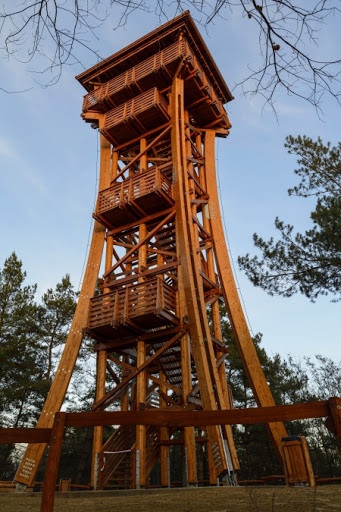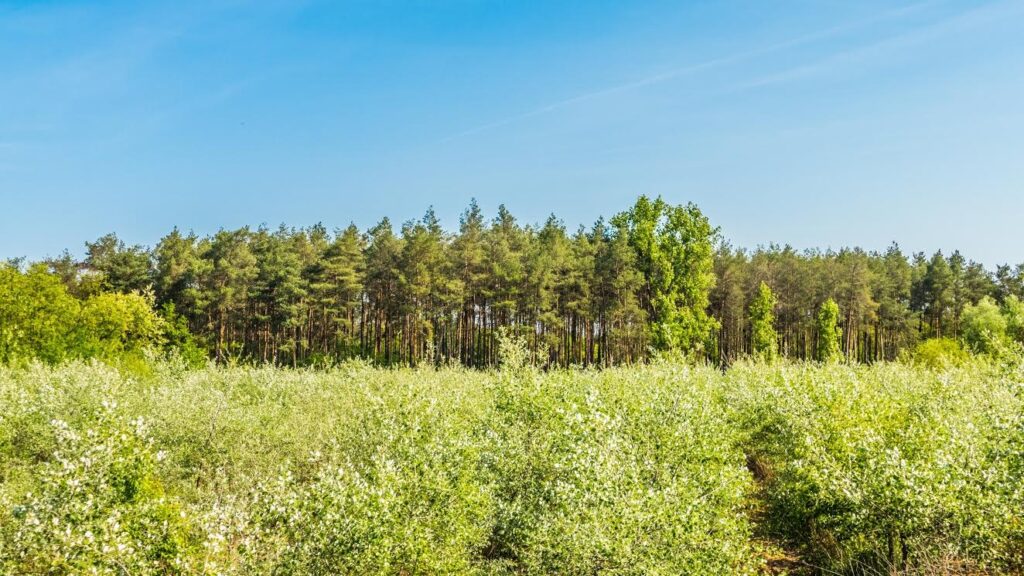The Zsuzsi railway came to be because “the city of Debrecen wanted to cultivate its 37.4 km2 forest, which is located 24-38 km from the city near Gúth.” A Railway was needed to transport the harvested wood. Therefore the city announced a tender for the construction, operation, and supply of the harvested timberline.
The tender was won by Kopf-Steinberger contractors and the first section of the railway was opened on July 16th, 1882. This was the 21.5 km section between Debrecen-Fatelep and Nyírmártonfalva. The railway was built in a way unique to the country, with a track gauge of 950 mm.
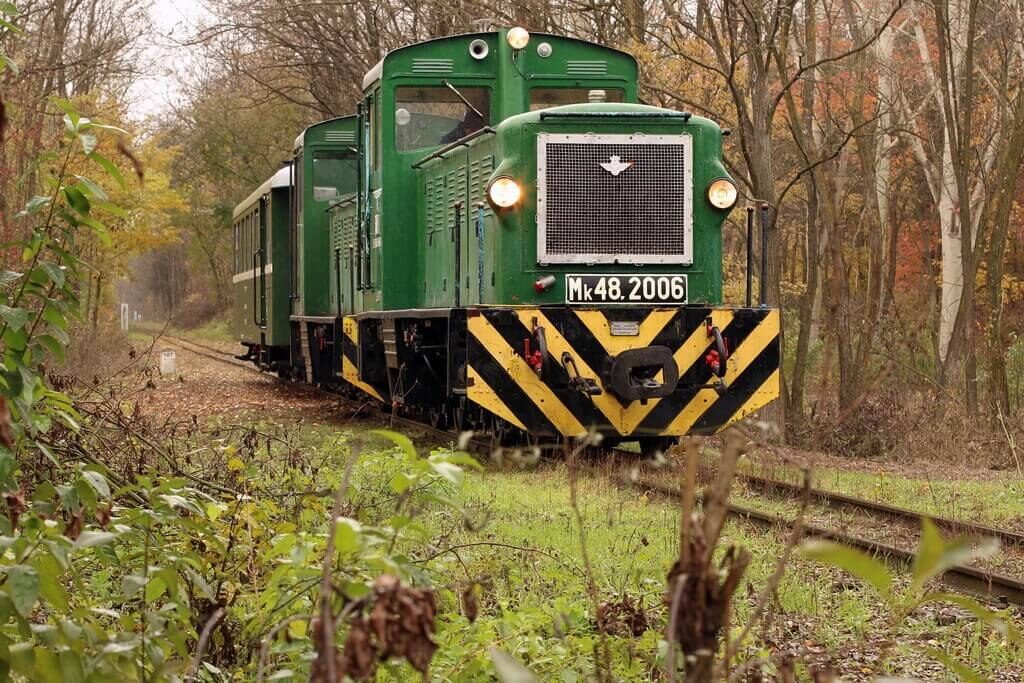
The track was formed by dog-headed rails laid on wooden girders, without a separate substructure, it was laid on the compacted sandy soil. The line, albeit only slightly, steadily sloped to a lumberyard built on the outskirts of the city, – as it was at the time. The railway was renamed Debrecen-Guthi Railway Company (DGVV).
Initially, two steam locomotives operated on the railway. The “I.” was a 107 hp wood-fired locomotive. This locomotive was named ZSUZSI, a name which it still retains today. The locomotive was a 133 HP coal-fired machine, 1909 vintage. The locomotives were powered by wet steam at a speed of 20 km / h Later, other steam locomotives also served on the light rail.
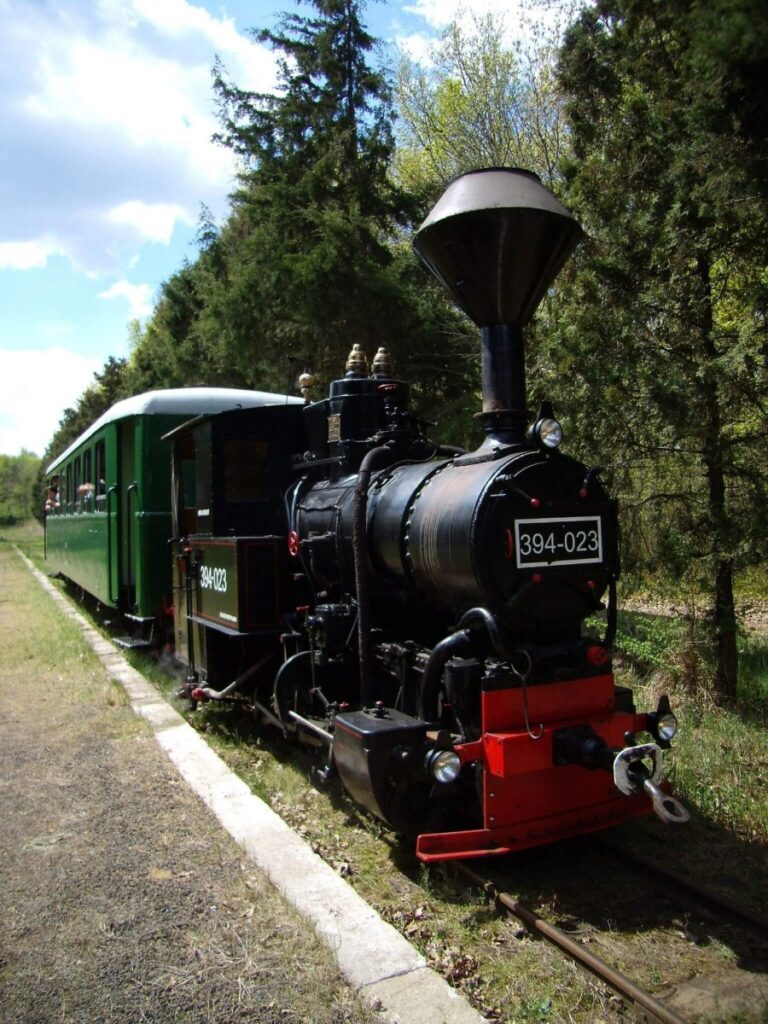
From 1902, the city of Debrecen took over the railway management, renaming it “The Debrecen City Industrial Railway” (DVIV).
Sidelines were built with a Swapping Forest branch to the South. A reinforced concrete tortoise bridge curved over the main railway mainline. The bridge designed by Szilárd Zielinszky was the first reinforced concrete bridge in Hungary. At the same time, the mainline was largely relocated to a new route.
Up until 1923, there was only freight transport by rail, thereafter limited public traffic was allowed. The 4.4 km section of Nyírmártonfalva – Gút was built in 1924 and since 1925, the light rail has been operating regularly. New sections were built in 1926 and then in 1931, Gúth – Angyaltelek (6.4 km), then Angyaltelek – Turistaház (2.3 km). The name of the line was changed to Debrecen Municipal Forest Railway (DVEV), and then to Debrecen Municipal Economic Railway (DVGV) during the crisis.
In 1931, motor vehicle towing began. The first motor car, a four-axle vehicle, was given the BC mot 101 track number, powered by a 60 HP Cadillac petrol engine.
The second motor car was built on the railroad in 1936, but it was already a two-axle vehicle. Original track number C mot 102, also equipped with a 60 HP petrol engine. The permitted speeds of the motor cars were 35 and 50 km / h, respectively. Tourists were also happy to use it on weekends, with access to the Gút Forest and the Shelter popular.
The railway was advertised on wall stickers all over the city. In 1937 the Turistaház – Megyehatár (1.5 km), in 1945 the Megyehatár – Nyírlugos (3.5 km), in 1949-50 the Nyírlugos – Nyírbéltek (8.5 km) sections were built. A II. The first newly built railway line in Hungary after World War II was built here.
The sidings and bridges were demolished by 1945. In 1949, the railway was taken over by the Hungarian State Railways, under the name MÁV Debrecen Kisvasút (MÁV DK), so the last section of the line was built in MÁV colors.
During this period standardization of the railway began with: 2 C-50 locomotives, 5 Bax, and 10 Jah cars were procured with a plate stop design.
The snowfall of 1940, followed by the spring flood, the II. World War II and caused an accident in the mid-fifties when two passenger trains collided on the open track. From conversion to decommissioning The 950 mm, track gauge was not used elsewhere in the country, which was also a problem in vehicle procurement and maintenance.
The railway was rebuilt in 1961 to a gauge of 760 mm in accordance with the MÁV standard. Thus, the then modern Bax series passenger cars, Jah-Gah freight cars, and Mk48 diesel locomotives were placed on the light rail, which made the operation of air-braked trains common.
Most of the old vehicles were scrapped, some were rebuilt, then returned to work in Debrecen and Cegléd. Some of the old rebuilt wagons remained in the service of the PFT. Passenger traffic was very strong in the ’70s, with 5-car trains packed to capacity.
Freight traffic was also crucial throughout, although it declined slightly in the ’70s. Forestry had industrial tracks in Fatelep, Gút, and Nyírbéltek. An engine color was also built at the outer terminus, the track master section was in Fatelep and Nyíracsád.
The 1968 Transport Policy Concept also designated this line for abolition. The “verdict” was executed on August 31, 1977, despite widespread public protest. The forest of Gút was declared protected, and the road on April 4 wanted an overpass in Debrecen.
The railway affected many homesteads and villages, the trains had a lot of marketers and commuters. After the cessation of the railway, the farmers were left without a means of transport. The freight traffic of the light railway is also well-characterized by the fact that the last loaded freight train arrived at the Debrecen-Fatelep station.
The homesteads were slowly depopulated, the buses proved to be insufficient for those traveling with large packages, so many moved into the newly built prefabricated houses.
The Excursion Railway
The railway line continued up until Hármashegyalja, and the section between Hármashegyalja and Nyírbéltek was opened by DKV, connecting to other light railways.
At the initiative of the County Council, MÁV handed over the remaining 16.6 km section to the city of Debrecen for the organization of a pioneering railway. The operation was provided by the Debrecen Transport Company with 3 Mk 48 diesel locomotives and 12 Bax cars.
The continuous railway operation was discontinued, and the trains ran from spring to autumn, serving exclusively excursion traffic. The wooden station house with a buffet was built in Hármashegyalja, but there was also a buffet in Erdészlak, where a local bus connection ran.
The lookout tower and Lake Hármashegy were also built during this period, in addition to the lake, there was also a youth camp and a small military-technical collection. From May 1st, 1978, it operated as the DKV Pioneer Railway, and from 1990 as the DKV Forest Railway.
In 1995, the operator DKV suspended traffic due to financial problems, after which the General Assembly of Debrecen decided to liquidate the remaining line. It was then that the Zsuzsi Forest Small Railway Circle of Friends and a foundation with a similar name were established, which established the line under the name of Zsuzsi Forest Railway (ZsEV) thus, establishing Zsuzsi Forest Railway on July 13th, 1996.
On 18th July 2020, the Zsuzsi narrow gauge railway re-opens to the public after a long period of renovation and reconstruction.
Route Description
Starting from the busy big city, the Zsuzsi Forest Railway runs on a long, almost straight section, then reaches the former Csereerdő station via the Fancsika stop along the main road 48. This section of the trail was built in 1882. The rest of the track was probably built in 1902-3, prior to this the trains ran on a different route. There is also a cycle path along the railway line that leads to the Panorama Road.
At Csereerdő, a siding branched off the light rail, which was used only for freight. Turning south, the rising embankment can still be followed to this day. The mainline turns from Csereerdő into a forest in a large arc to the north, and then here is the largest ascent of the track route.
There is Erdészlak station, which can be used for train meetings if necessary. It lies on two tracks, in a straight line, on a slight slope.
Leaving the station, the railway crosses the Panoráma road, then continues on a curved track between acacias, oaks, pine forests, arable lands, and homesteads.
At Sámsoni út, the remains and tracks of a former loading arch can be seen, followed by ever larger embankments and cuts. The highest embankment and deepest notch of the light railway were built in 1939, when a track correction was made between Haláperdő-Hármashegyalja, shortening the track.
At Hármashegyalja, there was previously a 600 mm gauge loading railway. The station is straight, 2 tracks, horizontal. An earlier continuation of the line that today is an extruded truncated track with a stop at the end. From the terminus, romantic hiking trails lead to the world of the Erdőspuszta, where you can discover the lookout tower and the artificial fishing lake.
The route of the small railway passed past Nyírmártonfalva, then approached Nyíracsád through the heart of Gút and the Gúti forest, then Angyaltelek, Turistaház, then Nyírlugos and finally Nyírbéltek. It also crosses the county border. Its entire length was 48 km.
Day Tip Excursion to Erdőspuszta
The Erdőspuszta of Debrecen stretches in a semicircle about ten kilometers to the east of the city. The area is popular for hiking, cycling, and hiking. This tempting landscape is the location of lookouts that stretch into the crown of trees, the trail of the Zsuzsi train, the Fancsikai lakes, bird watching, and star tours. The landscape is characterized by diverse flora and fauna. The former large-scale lily-of-the-valley oaks are found in smaller or larger patches. The area’s rich birdlife is stunning, but wild boar, deer, rabbit, and fox are common in this area. Good-smelling pine forests alternate with meadows dotted with wooded patches of forest and wildflowers. From early spring to late autumn, the hiker can return home with many botanical experiences.
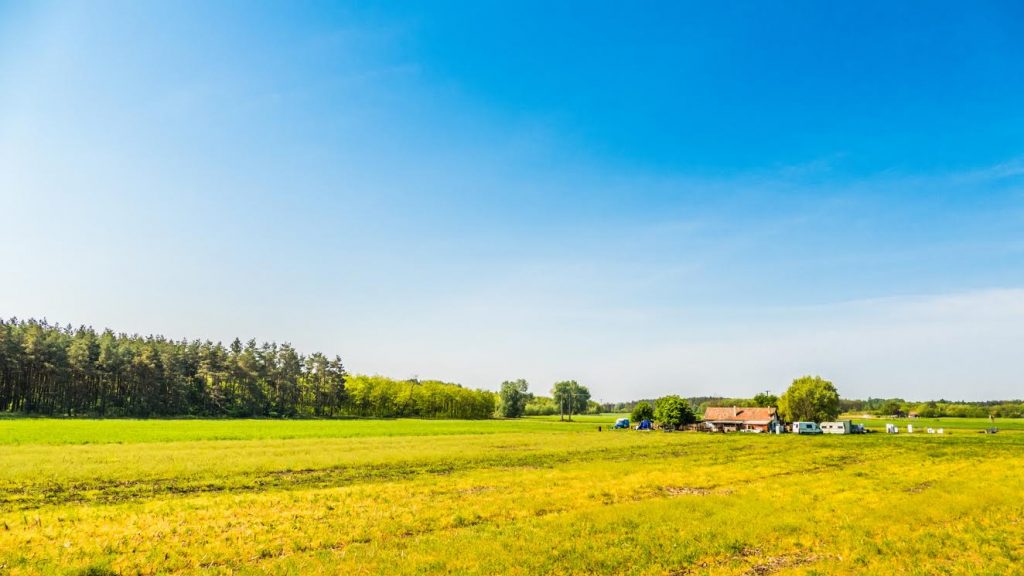
The name of the farm world dates back to the world of ancient times. The wind-formed sand dunes are so high that the people living here have called it a mountain.
It is worth traveling to the recreation center with the 138-year-old Zsuzsi train, the oldest operating railway in Hungary. There is also a cycle path running parallel to the railway.
The tourist attraction of Hármashegyalja lies in the world of values given by nature: the House of Nature, the forest playground, the indoor circuit and the open-air stage, the Forest School, the Kéktúra route, the forest study trail, the Hármashegyi Lake and the Lookout Tower, all it teaches the love and protection of nature.
Our Heart is Zsuzsi!
The Zsuzsi Forest Railway, travels on picturesque landscapes of the Erdőspuszta to the east of the “heart” of Debrecen. It presents its passengers with an unparalleled world of experiences, during the 50-minute trip. The 138-year-old light railway journey, gives a glimpse into the characteristic world of the homesteads, sometimes passing through the green tunnels built by the foliage of the trees. Leaving the bustling big city life behind, and the calm world and the idyllic beauty of the Erdőspuszta greets us.
The Gúthi Forest
To the north of Nyíracsád lies the largest contiguous forest block of the Great Plain, the Külső-Gúth forest. Most of the area is made up of acacia, while the beautiful old stands of the former birch forests of Nyírség can be seen. These old oaks hide a richer flora and fauna than acacia areas.
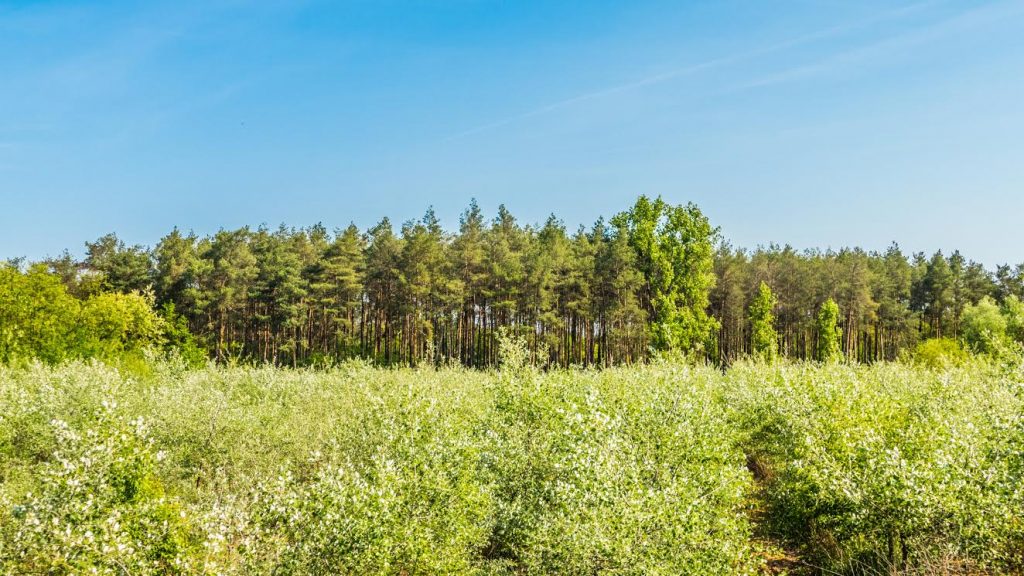
Gúthpuszta used to be the destination of the Zsuzsi Forest Railway, when the forest was still used for logging.
The area is also rich in cultural and historical monuments, for example, along the road crossing the forest block, you can admire the red-brick ruins of the Árpádian church. The earliest owner of the settlement was the Guthkelend clan. According to written sources, Adony and the neighboring settlement called Guth were already inhabited in the 11th century. These two settlements were the first settlements of the Árpádian family in Szabolcs County. Guth also had an earth castle at this time, and near the castle, the settlers in Adony built a monastery.
The area is also very famous for its wildlife, especially its famous fallow deer populations. The protected area covers 345 hectares.
Ördögárok
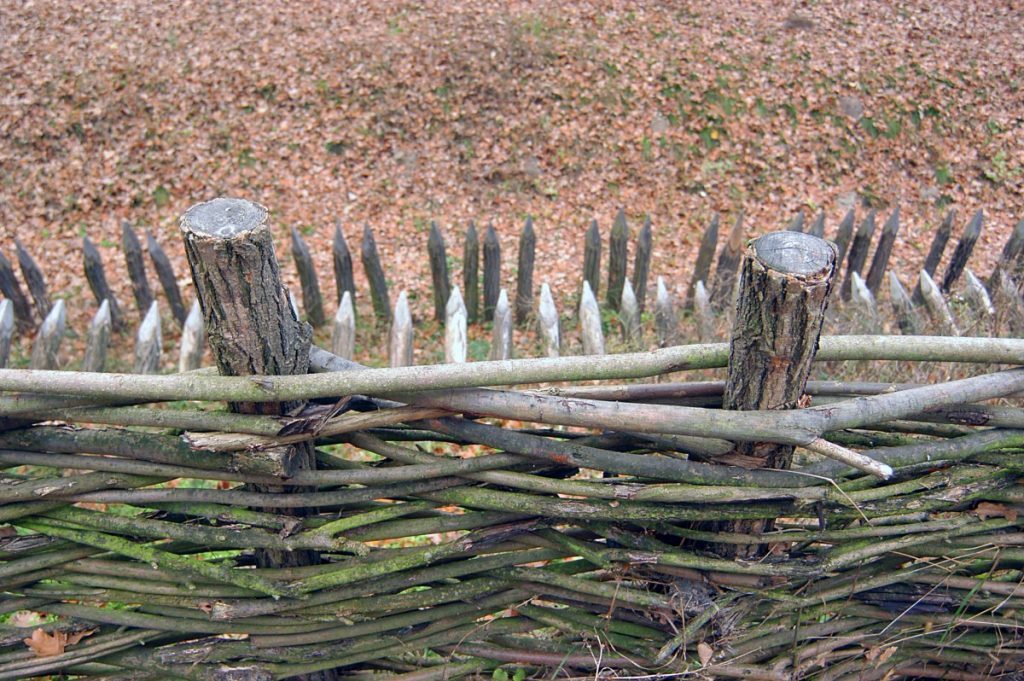
On the western edge of the Erdőspuszta, on the line of the Zsuzsi Forest Railway, near the Csereerdő stop, there is one of the reconstructed remnants of the Ördögárok rampart system, which is a demonstration site. The Ördögárok (Csörsz árka) is an ancient fortification system in the northern and eastern parts of Hungary. There are wooden poles pointed in the 2-3 meter deep ditch and a wicker hedge runs along the top of the accumulated embankment. The fortified rampart was built by the Sarmatian tribes settled in the Great Plain and then used by the Romans as limes.
Source: https://zsuzsivasut.hu/

